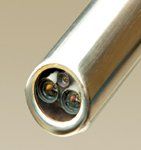Robotic revolution in gynecologic surgery?
Robotic technology has already revolutionized laparoscopic urologic surgery. Will gynecologic surgery be next?
The limitations of conventional laparoscopy have catapulted robots into the OR. The da Vinci Surgical System was designed to overcome these limitations by providing the surgeon with better dexterity, precision, and three-dimensional imaging. Introduced in 1999, the da Vinci Surgical System (Intuitive Surgical, Inc., Sunnyvale, CA) gained FDA approval for gynecologic procedures in March 2005.
A decade later, growing numbers of health-care institutions are purchasing the robotic system. Urologists are still considered the system's number one user, but robotic applications in gynecologic surgery have been expanding-and that expansion is reflected in literature reports on robotic applications for general gynecology, urogynecology/pelvic reconstructive surgery, gynecologic oncology, and reproductive endocrinology.
Advantages of robotic technology


What are its limitations?
